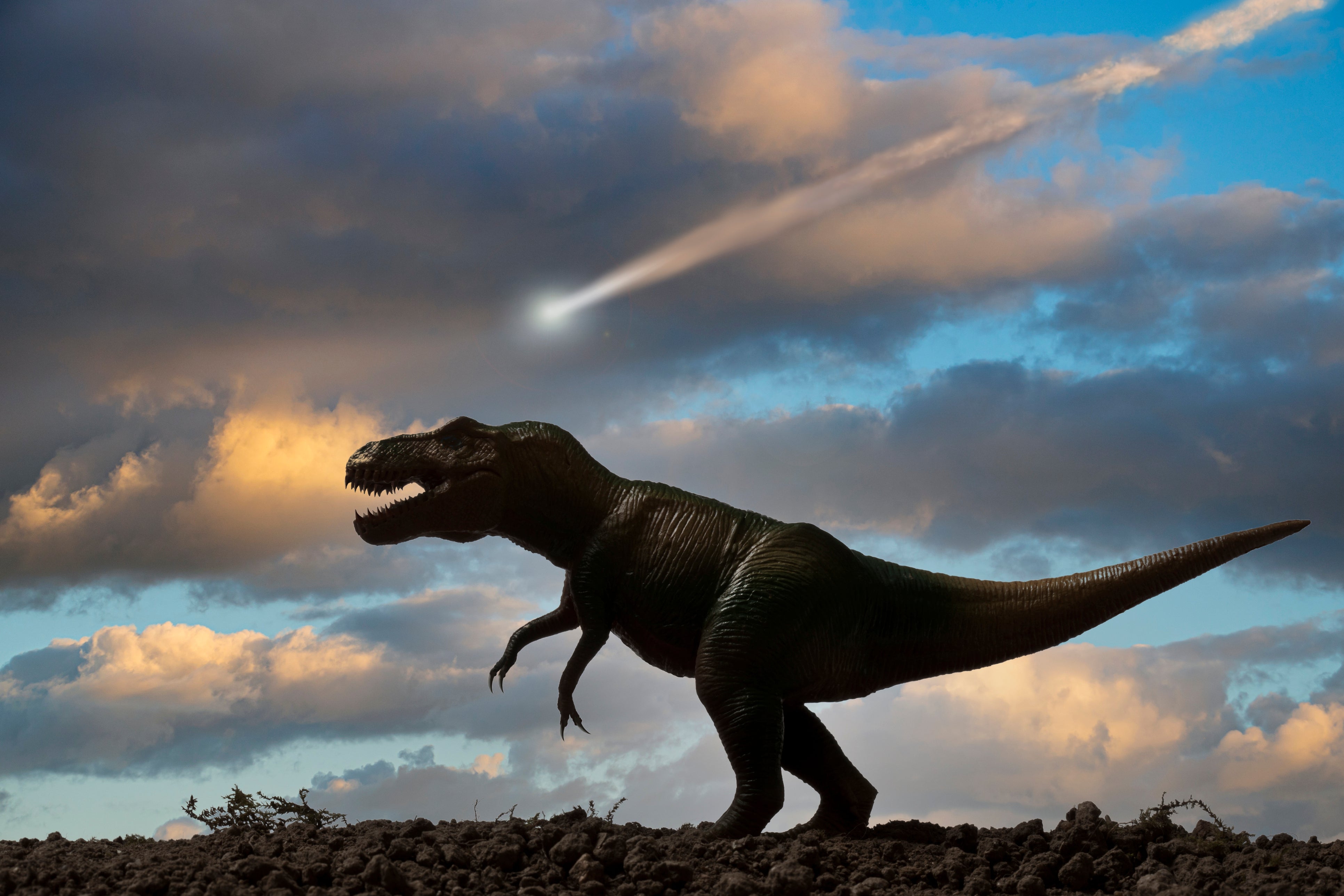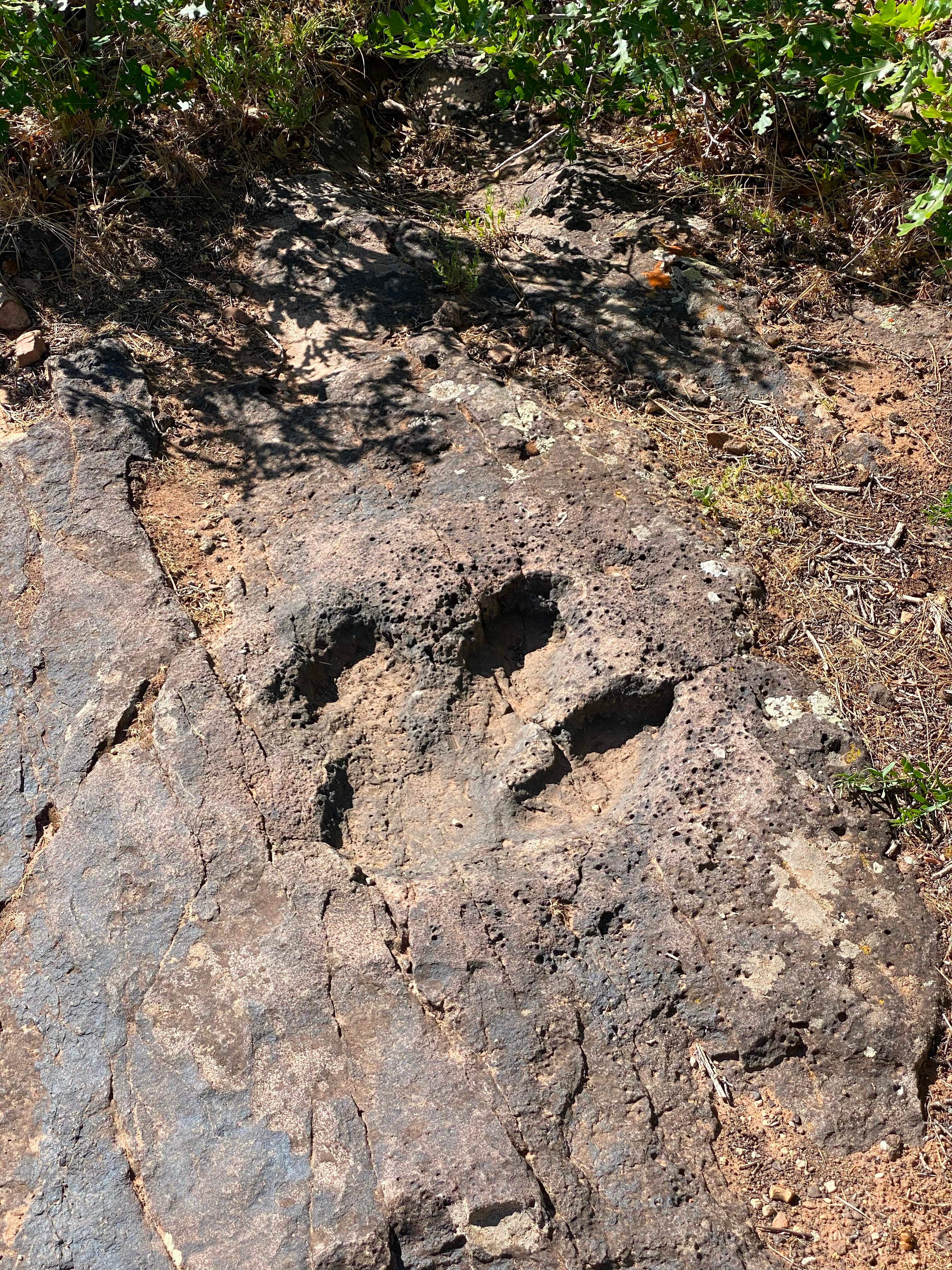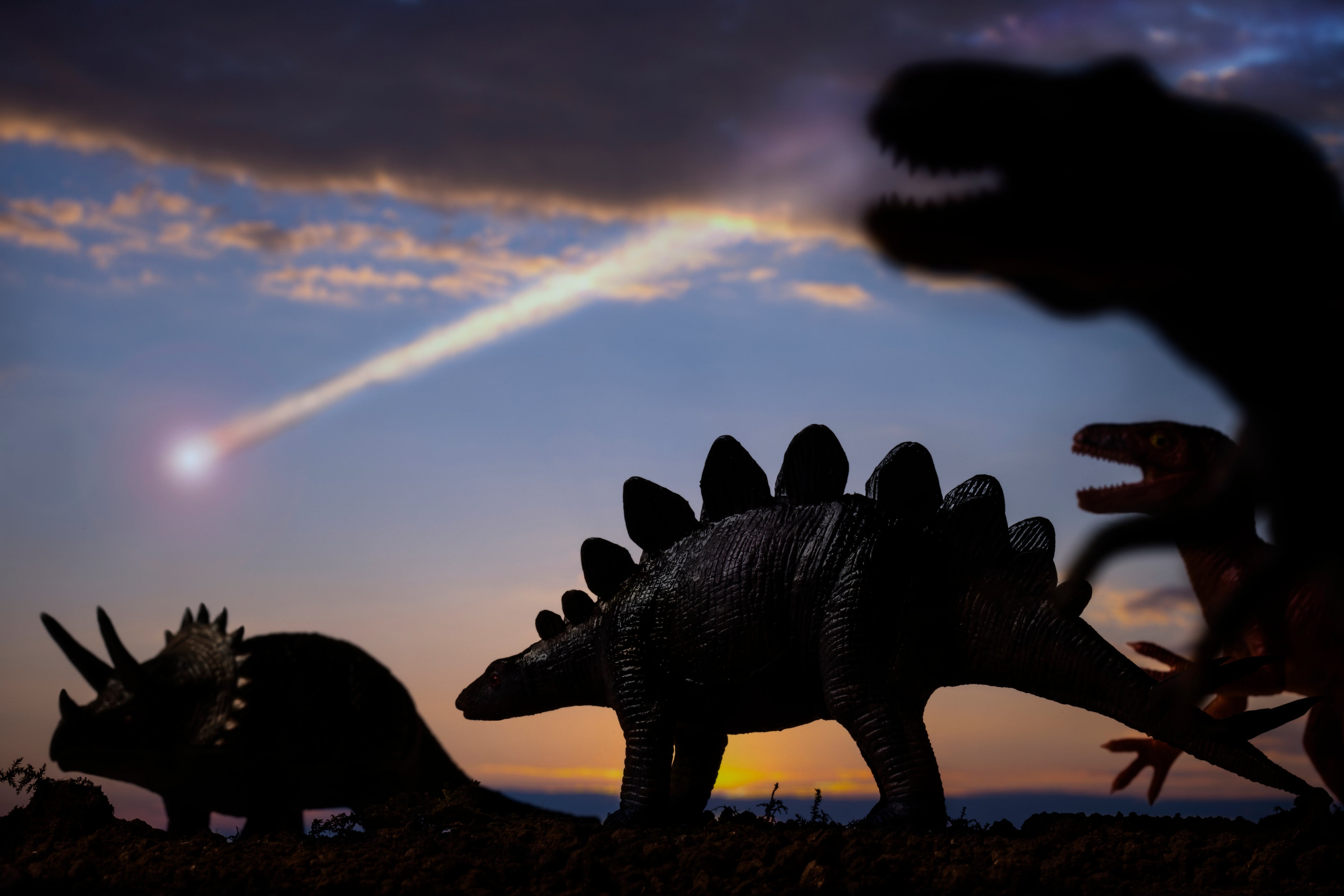The Independent's journalism is supported by our readers. When you purchase through links on our site, we may earn commission.
The dinosaur-ending meteorite did much more to our planet
We all know that the dinosaurs might well have been wiped out by a meteorite, but what other changes did that impact cause on our planet? New research may shed some light, writes Becky Ferreira

Your support helps us to tell the story
From reproductive rights to climate change to Big Tech, The Independent is on the ground when the story is developing. Whether it's investigating the financials of Elon Musk's pro-Trump PAC or producing our latest documentary, 'The A Word', which shines a light on the American women fighting for reproductive rights, we know how important it is to parse out the facts from the messaging.
At such a critical moment in US history, we need reporters on the ground. Your donation allows us to keep sending journalists to speak to both sides of the story.
The Independent is trusted by Americans across the entire political spectrum. And unlike many other quality news outlets, we choose not to lock Americans out of our reporting and analysis with paywalls. We believe quality journalism should be available to everyone, paid for by those who can afford it.
Your support makes all the difference.The first cave art. The dawn of agriculture. Although these are among the most crucial moments in humankind’s beginnings, our most dramatic origin story starts 66 million years ago. It was the apocalyptic instant when a rock from outer space slammed into Earth, terminating the age of dinosaurs and eventually offering a bountiful new world to our mammalian ancestors.
For 40 years, scientists have studied the tale of this catastrophic object, known now as the Chicxulub impactor. Today, the impactor represents more than just one bad day on Earth; instead, it has become a kind of Rosetta Stone that can decipher deeper riddles about the origins of life and the future of human civilisation, both on our planet and in other worlds across the galaxy.
“The Chicxulub impact event completely modified the geologic and biologic evolution of planet Earth,” says David Kring, a planetary geologist who leads the Center for Lunar Science and Exploration in Houston and who was part of the team that announced the discovery of the Chicxulub impact crater beneath Mexico’s Yucatán Peninsula in 1991. “That is such a big scientific story with popular appeal because it extinguished dinosaurs and cleared the slate, if you will, for mammalian evolution that led to humans, it’s going to captivate both the scientific community and the public for years to come.”
For decades, scientists argued about the cause of the dinosaurs’ deaths. Volcanic eruptions and other exotic hypotheses were proposed, but the scientific consensus settled on a rock from space being the killer. The Chicxulub theory now reigns so supreme that scientists have pieced together detailed timelines of what transpired on that fateful day, and other researchers are writing what could be called the prequel, seeking the extraterrestrial origins of the event to which we partially owe our existence.
As more advanced tools and techniques become available, scientists have been able to extract new and precise insights about this epic wipeout on our planet, and what it may mean for the beginnings of life itself.
The latest find comes from a study published in July in the journal Icarus that sought the original home of the Chicxulub impactor. It did this by leveraging the immense processing power of a NASA supercomputer to model the motions of roughly 130,000 asteroids in the main belt between the orbits of Mars and Jupiter.
This is confirmation of a really cool idea, and I think it helps me understand a lot more about how the asteroid belt may be influencing the Earth over billions of years
“Ultimately, we want to solve big questions, and this kind of work allows us to get after some of them,” says Bill Bottke, co-author of the study and director of the department of space studies at the Southwest Research Institute in Boulder, Colorado.
The Icarus study is part of a constant stream of ideas about the impact that can be dazzling in their creativity, often to the point of controversy. This year, for instance, a Harvard University team revived the possibility that the impactor was a comet, sparking pushback from many scientists in the field.
Another scientist, Lisa Randall of Harvard University, even zoomed out to present a galactic view of the Chicxulub event. In her 2015 book Dark Matter and the Dinosaurs, Randall proposes that the Milky Way contains a layer of dark matter, a mysterious hypothetical substance, that can help nudge outer solar system comets toward Earth.
Although this explanation has not gained a significant following, it demonstrates how Chicxulub attracts prismatic perspectives from the worlds of cosmology, computational science, astrobiology and other fields.
Bottke says access to Nasa’s Pleiades supercomputer was a “game-changer” for his team, enabling the researchers to run simulations of a huge asteroid population over the course of hundreds of millions of years.
This Big Data technique helped to match the strong geological evidence that the impactor was a carbonaceous asteroid — and not a comet — with a possible origin in the outer asteroid belt. This distant region between Mars and Jupiter contains many miles-wide carbonaceous asteroids similar to the Chicxulub impactor. But these rocks aren’t gravitationally hoisted into collision courses with planets as frequently as asteroids in the inner region of the belt, where there are fewer objects that match Chicxulub’s composition.

“We were not finding an obvious solution to where one of the largest impactors that has hit Earth over recent time came from,” says Bottke. “Essentially, a lot of the possibilities we had tried just weren’t panning out. It was really frustrating and it seemed like we were missing something.”
The team’s supercomputer approach revealed that Chicxulub-like asteroids escape from the outer belt about 10 times more frequently than implied by previous models. That boosts the odds that the dinosaur-killing rock may have originated there.
“This is confirmation of a really cool idea, and I think it helps me understand a lot more about how the asteroid belt may be influencing the Earth over billions of years,” says Bottke.
Sean Gulick, a planetary geophysicist at the University of Texas at Austin who was one of the leaders of a 2016 scientific drilling expedition that obtained precious rock cores from the Chicxulub crater, says the paper was an interesting approach to performing “the forensics, if you will, about where the impactor came from. It’s intriguing because it was such an important event for the evolution of our planet and ourselves.”
Gulick also noted that the study highlighted the hazards that asteroids pose across time, including risks faced by our planet-bound civilisation. The Chicxulub impact and the fate of the dinosaurs are frequently invoked as the ultimate argument both for investing in planetary defence research, and for expanding our species beyond Earth. (Although it’s worth noting that other worlds, including Mars, are not exempt from large-scale asteroid impacts.)

But Chicxulub also sheds light on some of the most evocative questions about the emergence of life. Kring has long been fascinated by this subject, and has helped produce a wealth of research about the microbial ecosystems that cropped up in the fallout of the apocalyptic event.
“There’s an argument that stipulates that this type of bombardment is involved in not only the perturbation of the evolution of life, but actually involved in the origin of life on our planet,” he says. “Understanding these processes is important, and our best measures of some of these consequences on Earth are going to come from the youngest of these impactors, like Chicxulub, because the evidence is more robust.”
The mission Gulick helped lead continues to clarify the impact’s role as both a destroyer and a crucible of life. As the researchers plumbed the depths of the buried doomsday event, they found dusty traces of the impactor, sandy backwash from the tsunami it had created and the fossilised remains of organisms that thrived in its aftermath.
Perhaps most astonishing, a study published this summer described modern-day microbial descendants of those early crater adopters, still living in the shadow of the catastrophe that was colonised by their forebears.
“It’s amazing to me that you can have an impact and you can generate an ecosystem, then 66 million years later, you still have life that is present in that location because of this previous condition,” says Gulick. “On a bigger scale, maybe you can generate habitats with impacts really early in Earth’s history and have ecosystems survive afterward. That reflects one of the ways in which you might get life going.”
In this sense, the Chicxulub impactor truly does have galactic implications as a time capsule of both biological disaster and the birth of new life. Other life-bearing worlds across the Milky Way might be similarly shaped by asteroid impacts, with tales of destruction and recovery all their own.
“This is an issue that potentially goes far beyond the extinction of dinosaurs,” says Kring.
This article originally appeared in The New York Times.






Join our commenting forum
Join thought-provoking conversations, follow other Independent readers and see their replies
Comments